Falling behind…

When EPCOT Center opened in 1982, it was advertised as the early arrival of the 21st century. The problem is that by the mid-1990s, the actual 21st century was on the horizon… and it didn’t look much like Future World…
For one thing, Future World was, by design, subject to the same “Tomorrowland Problem” that Disney tends to encounter anytime they attempt to actually, scientifically predict the future – an outright impossible thing to do. Given that Disney had already seen that issue arise in Disneyland and Magic Kingdom’s Tomorrowlands by time EPCOT Center was built, designers had to have known that the same race against time would eventually be lost in Future World, too. But in EPCOT, there was a difference…
EPCOT Center’s sponsorship model was supposed to save Future World from falling behind. Remember, that “win-win” World’s Fair model meant that the corporations footing the bill for the park’s pavilions would be motivated to keep the stories, rides, and technologies within up to date lest their own brand reputations be soiled alongside outdated technologies. And as company’s sponsorship deals came up for renewal and Disney began pressing for expensive and elaborate upgrades, sponors balked… and walked…
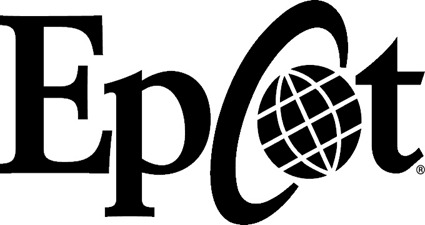
That’s why, beginning in the mid-’90s, EPCOT Center became Epcot… and things started to change. Disney World’s second gate had, in some ways, doomed itself with its inherent ’80s style (vast, monumental, concrete, barren, pastel pavilions), its (failing) futurism, and its unfortunate pop culture perception as Disney’s “educational” theme park that kids dreaded “wasting” a day at. And given that sponsors up for renewal were either exiting or requesting flashier, modern, thrilling rides, Disney made some big changes.
- Kraft’s sponsorship of The Land and its Lost Legend: Kitchen Kabaret disappeared at the end of their term in 1993, with new sponsor Nestle necessitating big changes to the pavilion before agreeing to invest.
- General Motors, meanwhile, could no longer justify sponsoring the Lost Legend: World of Motion that dutifully traced the history of transportation in a stunning dark ride. The only way they’d pay up is if it were swapped in 1996 for the high-energy, buzzy TEST TRACK.
- Exxon-Mobil would only support the aging Lost Legend: Universe of Energy if it got a pop culture infusion to become Ellen’s Energy Adventure in 1996 (which closed altogether in 2017).
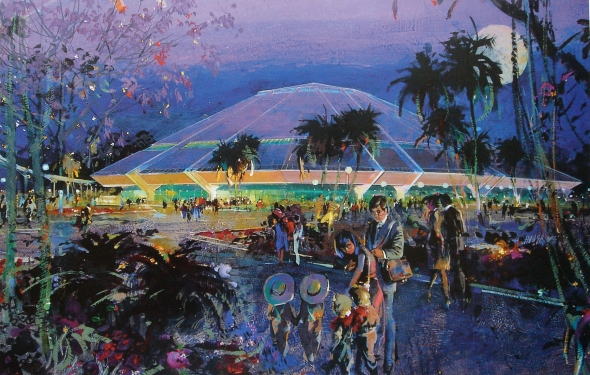
- Without its General Electric sponsorship, even Future World’s capstone Lost Legend: Horizons was razed in 1999 in favor of the relatively brainless Mission: SPACE thrill ride, sponsored by HP.
- MetLife decided to discontinue its sponsorship for the Lost Legend: Body Wars and the rest of the Wonders of Life pavilion in 2001, after which Disney literally let it die in plain sight without even a reasonable refurbishment for six more years before closing altogether.
In other words, Future World was changing. Across the park, the major, headlining dark rides of each pavilion fell one-by-one. It seemed that every opening day EPCOT Center classic was doomed by way of either a character overlay, replacement with a modern thrill ride, or – perhaps worse – rotting in place.
The Millennium Celebration
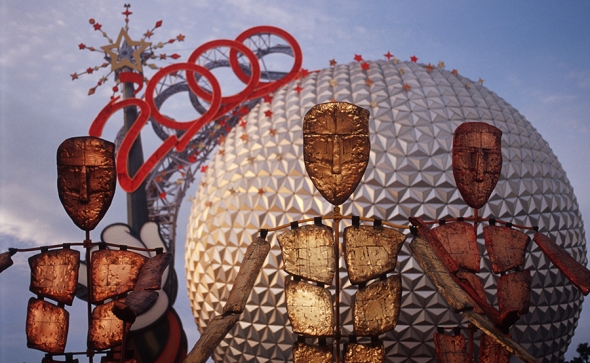
With the new millennium approaching (and Epcot acting as the resort’s hub for the Millennium Celebration), Kodak’s sponsorship contract with Disney kicked in – they would need to invest in the Imagination pavilion if they wanted to retain sponsorship. And frankly, it was probably time! Watching the ride-through on the last page, maybe you agree that new Audio-Animatronics, fresh effects, and a 21st century touch would’ve taken Journey into Imagination to the next level, establishing it for good as a classic on par with Pirates.
The problem is, Kodak had been in a financial tumble for years, reeling from the rise of digital photography and their short-sighted responses to it. In 1999, Kodak cut its employment by a staggering 20%. In the wake of such devestating layoffs, investing big money in a proper Imagination re-do would have Kodak skewered by the media…
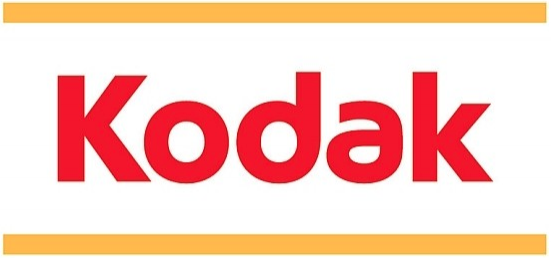
Allegedly, Kodak even considered dropping its Disney sponsorship altogether rather than re-doing Imagination… but felt that their long-time competitors, Fujifilm, were buzzards circling the relationship, eager to step in and take over… So with budgets low and time short, Imagineers allegedly considered a ride based on Flubber or even a dark ride through the mind of a celebrity (perhaps a creative cousin of the Declassified Disaster: Superstar Limo?).
Finally, Imagineers came up with a concept that seemed to sell well to all parties. One executive allegedly said, “If you were in that room hearing the pitch you would have been blown away. You’ll be in this dark room and not be able to tell up from down. You will be surrounded by sound and not know the direction. It was all amazing, sounded state of the art and more importantly guaranteed to give the guests a terrific experience.”
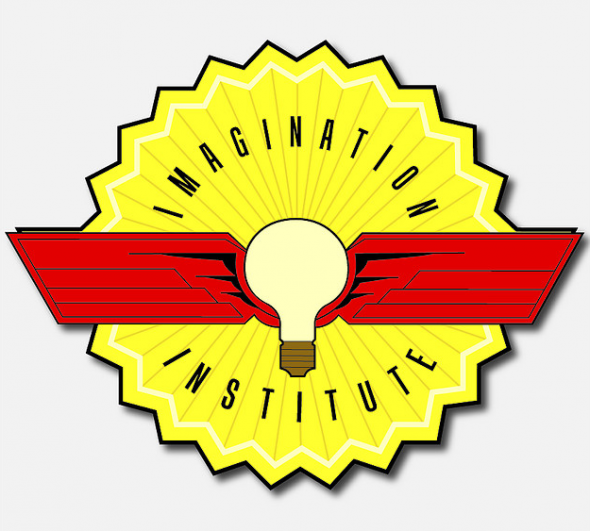
The new Journey Into YOUR Imagination was given the green light by both budget-conscious Kodak and budget-conscious Disney, who wrapped the sensory fun house ride in an “Imagination Institute” story. The notion of the Imagination Institute signals something Disney fans usually love: continuity. The “Imagination Institute” was also the setting for Honey, I Shrunk the Audience film playing the pavilion’s 3D theater, uniting the two attractions (and thus, the whole pavilion) in one setting and story.
Adding the word YOUR to the ride’s name might not seem like much, but what awaited inside the Imagination pavilion in 1999 made Disney fans gasp… And it’s remembered today as the absolute worst dark ride Disney World has ever hosted… Read on to head inside…
Take 2: Journey into YOUR Imagination
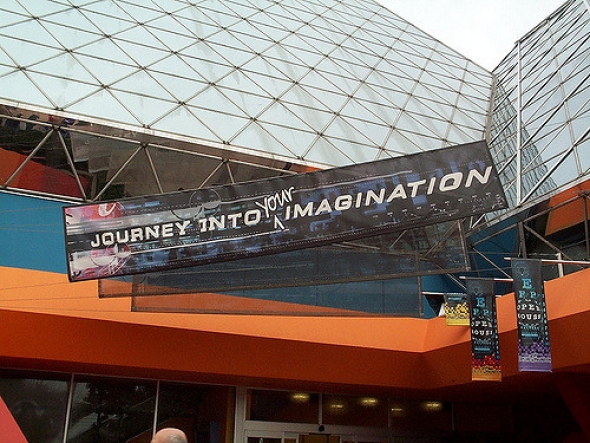
When the doors to the re-named Journey Into YOUR Imagination opened just one year later in October 1999, Dreamfinder was nowhere to be found. Neither was “One Little Spark”. Figment made a cameo appearance as a constellation in the background and brief, quickly-shushed voice, but otherwise, Journey Into YOUR Imagination had literally nothing in common with its beloved predecessor.
Even the ride’s signature, brilliant turntable was decommissioned. In fact, the ride track was physically shortened by 40%, as nearly half of the ride was removed with the track connected via a new bypass. What was once the turntable became the load / unload area (see below) with the newly condensed ImageWorks: What If? Labs relocated from inside the pyramids to be literally be built on the remains of half of the ride. The original 12-minute dark ride had been replaced by a 6-minute one. Seriously.
The new Journey Into YOUR Imagination starred Eric Idle (of Monty Python fame) as Dr. Nigel Channing, taking guests on a guided tour of the Imagination Institute. As the ride began, an “Imaginator” scanner would scan guests’ minds and display what they were thinking of… which, of course, was cobwebs and “vacancy” signs. The mostly-plotless ride then whisked guests through the darkened Institute and past current “Experiments” designed to kick-start their imaginations.
But if you want to take a full ride through Disney World’s “worst ride ever,” you’ll want to make the jump to our full, in-depth feature exploring the disastrous Imagination Institute inside and out – Declassified Disaster: Journey Into YOUR Imagination.
Fans reacted with absolute outrage at the new ride. Epcot had been famously devoid of Disney characters, so Dreamfinder and Figment had become veritable icons of the park. Now, they were gone, and the charming Imagination ride had become a cold and lifeless “sensory fun house.”
Journey Into YOUR Imagination lasted two years and one week – one of the shortest life spans of any Disney attraction. Then, it closed for a six-month refurbishment. Fans weren’t sure what the ride would look like on the other side, or if it would even reopen for that matter! But it did. Disney had one more trick up its sleeve to inject some energy back into the pavilion.
Take 3: Journey Into Imagination With Figment
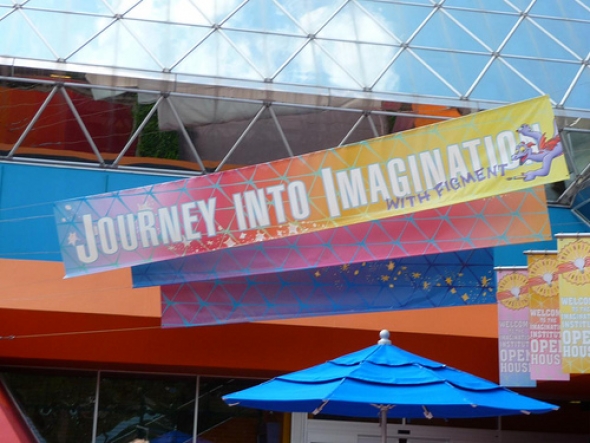
After a six month closure, the ride re-opened again in June 2002. It’s third version – the current one – is called Journey Into Imagination With Figment. Despite the promising name, the attraction retains the Imagination Institute storyline and Eric Idle’s Dr. Channing character, merely inserting Figment throughout the attraction. Even then, forget the creative dragon with “childish delight” from the original – this Figment is practically a menace, spraying skunk smells and graffiting.
At the very least, it removed some of the middle version’s worst scenes and re-organized the institute into a logical narrative of “Sensory Labs.” (Of course, Figment derails the trip before the Touch and Taste Labs – perhaps an allusion to half the ride’s track being closed?)
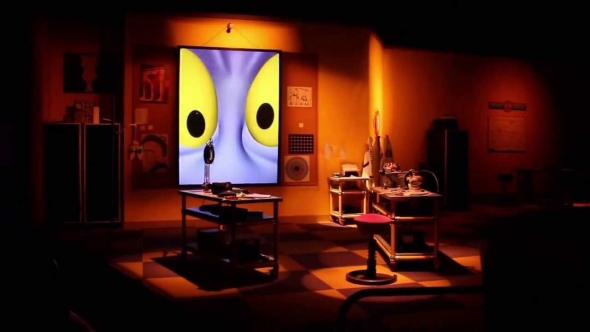
The current attraction also thankfully repurposes “One Little Spark,” albeit a new version sung by Figment in each Sensory Lab, and a reprise by Dr. Channing once he’s learned the importance of imagination, too.
Basically, Journey Into Imagination With Figment is a quick and cheap answer to a serious problem, arbitrarily re-inserting Figment into the disengaged and half-hearted Imagination Institute storyline. It is better than the horrific middle version? Yes. But what a terrible thought that the “new” Journey into Imagination has been around for 18 years; longer than the 17 year run of the original…
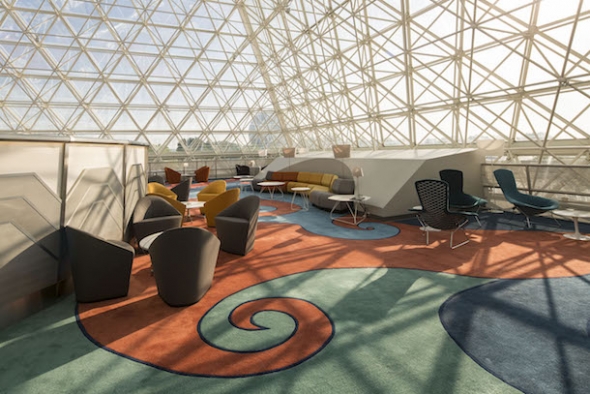
For those keeping track, the Imagination pavilion today is made of the still-sad Journey into Imagination with Figment, the ImageWorks: “What If?” Labs (relocated from within the pyramids to the space vacated by half the dark ride being shuttered; a Disney Vacation Club lounge took the second floor space instead, above), and the Magic Eye Theater, which has alternated between movie previews and Disney-PIxar short film showings since the closure of the Captain EO Tribute in 2015.
And that leaves Imagination as perhaps the least imaginative pavilion at Epcot, right in the midst of one of the largest theme park transformations ever. What’s next? We’ll explore the options on the next page.


